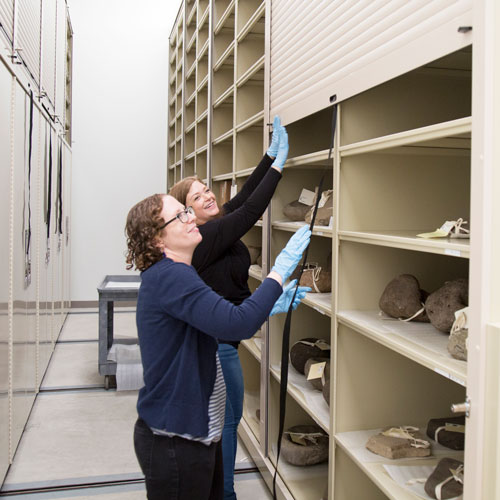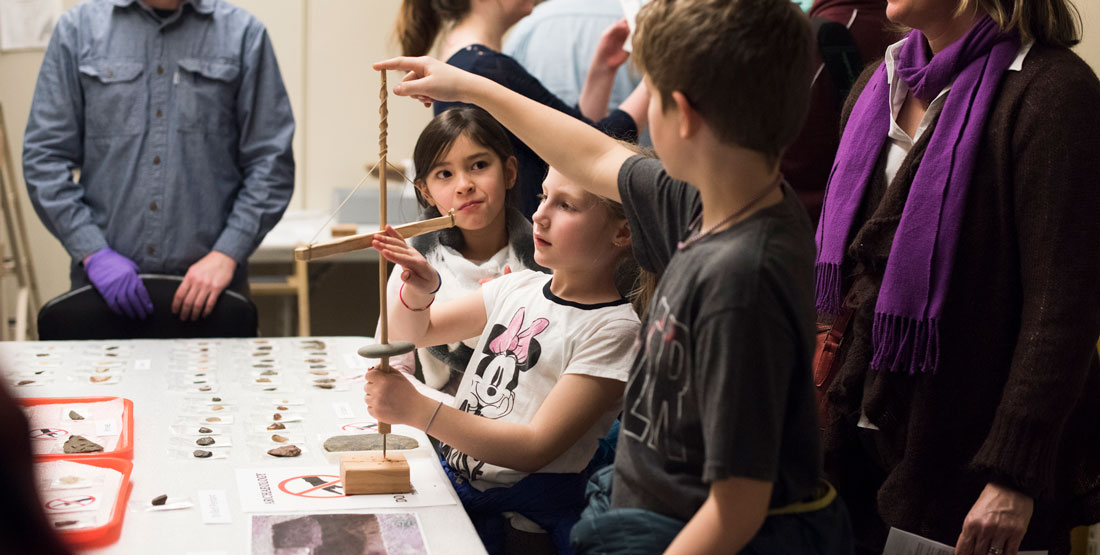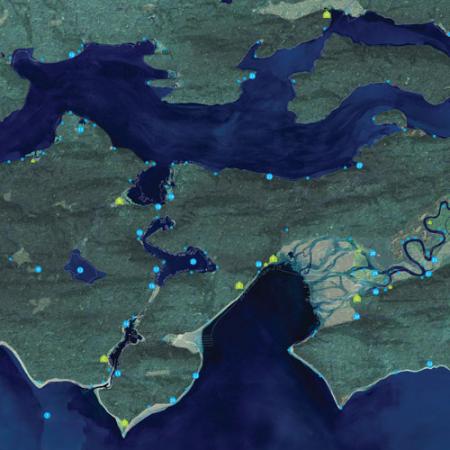At a glance
Archaeology Collections
Million objects in the Archaeology Collection
Of collections owned by other public agencies and Tribes
Linear feet of field documents, maps, photos and media
Database
As a result of a devastating ransomware attack, the Archaeology database is no longer accessible online.
Please contact the Archaeology team for information about our collections and records.
Collection Highlights
The Archaeology Collection contains artifacts, soil samples, animal and plant remains, and their associated field records.
Wetsite Artifacts
History of Seattle
Held-in-Trust Collections
Comparative Faunal Collections

Our Research
Burke archaeology collections are used by researchers from around the world to answer questions about human history, lifeways and health, past ecosystems and climate, and to reconnect to traditional knowledge.
Recent projects in our workrooms include studying the materials and weaving patterns of ancient baskets, diet of Seattle’s immigrant communities, sea mammal hunting in the Kuril Islands, river canoe construction in the Green River valley, and histories of prohibition era alcohol consumption in Seattle.
- Curator of Archaeology Dr. Peter Lape focuses primarily on understanding how people lived on small tropical islands in Island Southeast Asia. He studies pottery, food residues and marine sediments to answer questions about trade, diet history and past climates.
- Archaeology Collections Manager Laura Phillips is interested in topics that pertain to alternative and collaborative methods for researching and curating archaeological materials in light of the wealth of community knowledge about object care and preservation.
University of Washington Courses
Students can also take classes in the Burke Museum Archaeology Collections, engaging in archaeology, museology, curation, interpretation and independent research.
Questions & Answers
We’ve compiled answers to some of the most common questions we receive. Have another question that you need help with? Contact us.
I’m a researcher. Can I visit the collection?
The Burke Museum actively encourages research on all of its collections. Interested researchers should contact us to obtain information on available collections, the research process and to schedule an appointment to discuss an individual research plan.
Archaeology regularly offers scholarships to support students, cultural experts and other researchers Archaeology has some research equipment available to borrow. Learn more about Archaeology Collections Scholarships.
Researchers must complete a preliminary Research Request Form (webform). Once your submission has been received, our Collections Manager will reach out to learn more about your project. Before beginning work, researchers will be asked to agree to our department’s conditions of access (see Research Access Policy PDF). For collections access that may result in publications or presentations, researchers may also be asked to submit a one-page description of the proposed research.
Resources:
Can I borrow an object for my research?
Requests for borrowing objects for museum exhibits are considered on a case-by-case basis. We cannot lend objects to individuals.
For more information, please refer to our Culture Collections Loan Policy (PDF) and contact us.
Can I have an object identified?
Our staff is able to answer questions and provide information on a time-available basis. For more details about identification and how to prepare to have something identified, see the Burke Museum Object Identification Request page.
I’d like to donate something. How do I go about doing that?
We are actively growing both our object and archival collections. If you wish to make a donation, please contact us.
Does the Burke repatriate collections?
Yes, the Burke Museum works closely with tribes throughout the U.S., meeting the letter and spirit of the Native American Graves Protection and Repatriation act (NAGPRA). The Burke also works with other communities and countries to repatriate ancestors and sensitive artifacts. Learn more about Burke Museum Repatriation.
Can I request a photo of an object?
Please review the information on the Copyright & Images page, which includes relevant forms and additional instructions then contact us to request an image.
Can I become a volunteer?
We couldn’t do what we do without volunteers! Visit our Volunteer page for more information about Burke Museum volunteer opportunities and to view current openings.
Culture Team
Additional Resources
We've compiled several online resources from outside of the Burke Museum that may also be of interest.
Land Acknowledgement
The Burke Museum stands on the lands of the Coast Salish Peoples, whose ancestors have resided here since time immemorial. Many Indigenous peoples thrive in this place — alive and strong.

Support Archaeology
Your gift makes it possible! We couldn't do what we do without generous donor support for collections care, research and public outreach.





















